White Soil Worm: [Characteristics, Detection, Effects and Treatment]
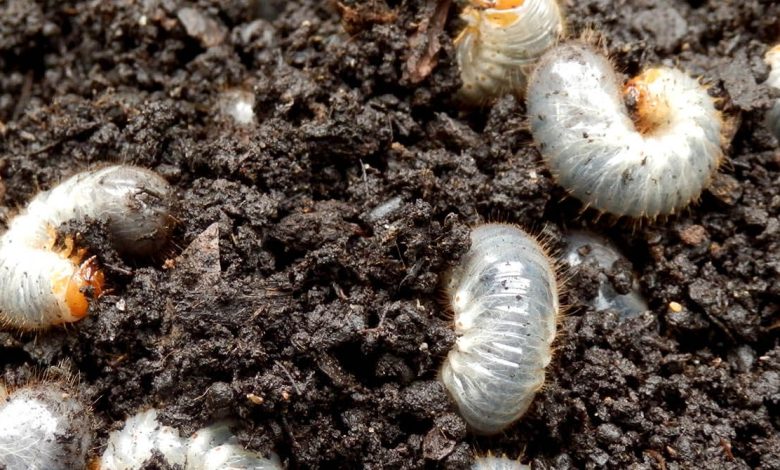
What is the white soil worm?
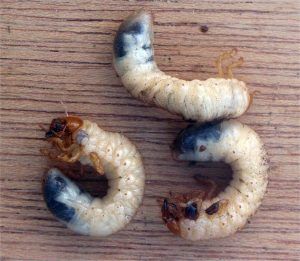 The Anoxia villosa and Melolontha melolontha, better known as white worms, are assiduous inhabitants of the earth, eager to eat the roots of available plants.
The Anoxia villosa and Melolontha melolontha, better known as white worms, are assiduous inhabitants of the earth, eager to eat the roots of available plants.
There are other lesser known species of white worms such as Tropinota hirta, Phyllopertha horticola and Melolontha hippocastani.
They are all the larvae of different types of beetles.Anoxia villosa is the most abundant of the species, but Melolontha melolontha is also abundant in France and the rest of the European continent.
They are fierce consumers of the tubers and bulbs of ornamental plants, so they can become a real headache for the health of our garden.The favorite times of the attacks are spring and autumn, when they sometimes intensify alarmingly.
This is not the case in winter and summer, where the most extreme temperatures tend to keep them away from food voracity.When they are provided with abundant watering in the summer, they can hatch from 8 years.
And although a few scattered larvae in the roots do not cause serious damage, it is necessary to invade to the point of rendering the entire root system of a tree useless to cause its drought and death.They are beetle larvae, fat, white and arched.
The adult measures 3 centimeters and the larva 4. They are long-lived larvae: they last 3 or 4 years before turning into a beetle. When the cold arrives, they go deeper into the ground and hibernate. The problem lies in the larva, and not in its adult stage, that is, the beetle.
How can we identify it?
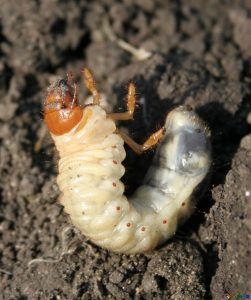 An inspection of the soil will suffice to visualize these white worms, but also the yellowish color of the leaves until they wither, indicate that something is very wrong.
An inspection of the soil will suffice to visualize these white worms, but also the yellowish color of the leaves until they wither, indicate that something is very wrong.
One way to locate them in the garden is when birds and moles become regular visitors, because they are surely looking for them in the dirt.
The same happens with the visit of blackbirds that roam the place, so a period of daytime observation will suffice to discover them in full action.
As we have already said, these worms are actually beetle larvae. They have a fat, arched appearance and are white in color. An adult can measure about 3 cm and the larva 4 cm and a little more. They tend to group together, they do not live alone.
They also have a long life that sometimes exceeds 4 years, before becoming a powerful beetle.They know how to protect themselves very well in the winter, because that is when they sink the most into the ground.
So they can become a real problem for the root system of plants, because they will be able to suck all the sap if they become a pest. Otherwise, the adult beetle is never as troublesome as the worm.
What plants does the white soil worm affect?
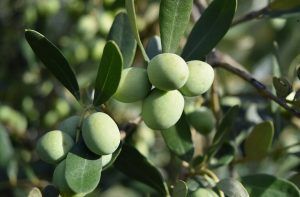 Generally, they attack all ornamental, annual, perennial and perennial plants, including their tubers and bulbs.
Generally, they attack all ornamental, annual, perennial and perennial plants, including their tubers and bulbs.
They mercilessly attack olive trees, almond trees, prunus, quince trees, abies pinsapos, ligustrum, liquidambar, among many other species.
There is a species of white worm whose larvae cause a lot of damage to winter crops of wheat, peas, barley, lentils, as well as early sowing of summer crops such as corn, sorghum and sunflower.
There are many species, but the most harmful are the so-called «Bull bug» or Diloboderus abderus Sturm, which acquire a perfect «C» shape when they feed on the roots of plants.
How to combat the white worm in the soil?
There are several effective methods to combat them, as long as they have become a pest. Otherwise, they do not do much damage to the plant.
Pesticide
A good pesticide is ideal and immediately afterwards abundant irrigation must be applied so that the product infiltrates the soil and causes the worms to sprout, coming to the surface.
Humidity of floor
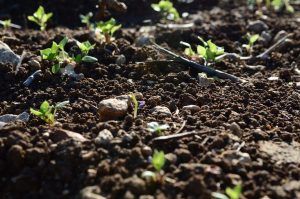 White worms love moisture, they love wet soil and females in this environment are very likely to lay many eggs.
White worms love moisture, they love wet soil and females in this environment are very likely to lay many eggs.
This is not the case with dry, arid lands and those that receive the summer heat.So there must be a balance in irrigation, in order to prevent them from an ideal habitat.
white lawn worm
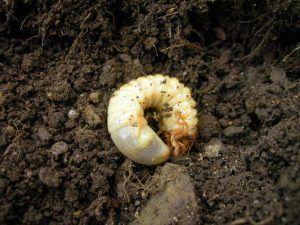 It is also pertinent to control all the grass near our land, so we have to be very aware of whether a neighbor is being affected by a plague of these worms, since they will surely migrate to the garden as soon as they have the opportunity.
It is also pertinent to control all the grass near our land, so we have to be very aware of whether a neighbor is being affected by a plague of these worms, since they will surely migrate to the garden as soon as they have the opportunity.
Another healthy recommendation is to replace the pieces of dead grass in the garden, with the reseeding of new weeds, but not before making an inspection to verify that these worms are responsible for the damage.
They are a terrible pest for lawns in general, leaving dry, uneven patches that deepen towards the last third of summer.They are identified because when they are feeding on grass roots, they take on a characteristic “C” shape.
What are the best products to remove the white grub from the soil?
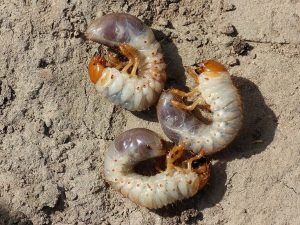 Insecticides based on the Chlorpyrifos component are very effective when it comes to fumigating the area affected by white soil worms.
Insecticides based on the Chlorpyrifos component are very effective when it comes to fumigating the area affected by white soil worms.
Chlorpyrifos is an extremely effective active ingredient for white and other soil worms, such as donuts, gray, wireworms.
The way to apply it is for 15 days in a row, every afternoon.But the 4% Mesurol brand has also proven to be very effective. Another widely used commercial brand in these cases is Vydate, which contains an active substance called Oxamyl, the strongest of all.
Both must be used following the indications of the leaflet for use.The safest thing is that about 3 applications in a row are needed to exterminate the pest.
In the event of an attack on the lawn, the treatment to be followed to control the white bollworm requires the application of trichlorfon (Dylox) bendiocarb (Intercept) as well as halofenozide (Mach 2, GrubBGon, GrubEx) and the problem can also be treated with the application of Imidacloprid or Mérit.
Likewise, there is an effective alternative product: the Heterorhabditis bacteriophora nematode, very effective in exercising absolute control over the white worm. It is important to apply abundant irrigation, immediately after the insecticide is spread on the ground, because this guarantees its maximum absorption.

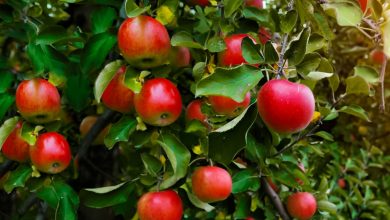

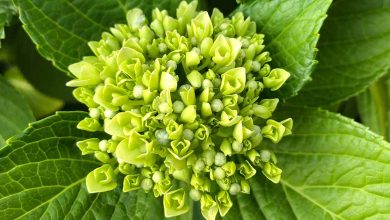
![Photo of The Zamioculcas: [Care, Planting, Irrigation, Substrate]](https://www.complete-gardening.com/wp-content/uploads/2022/08/the-zamioculcas-care-planting-irrigation-substrate-390x220.jpg)